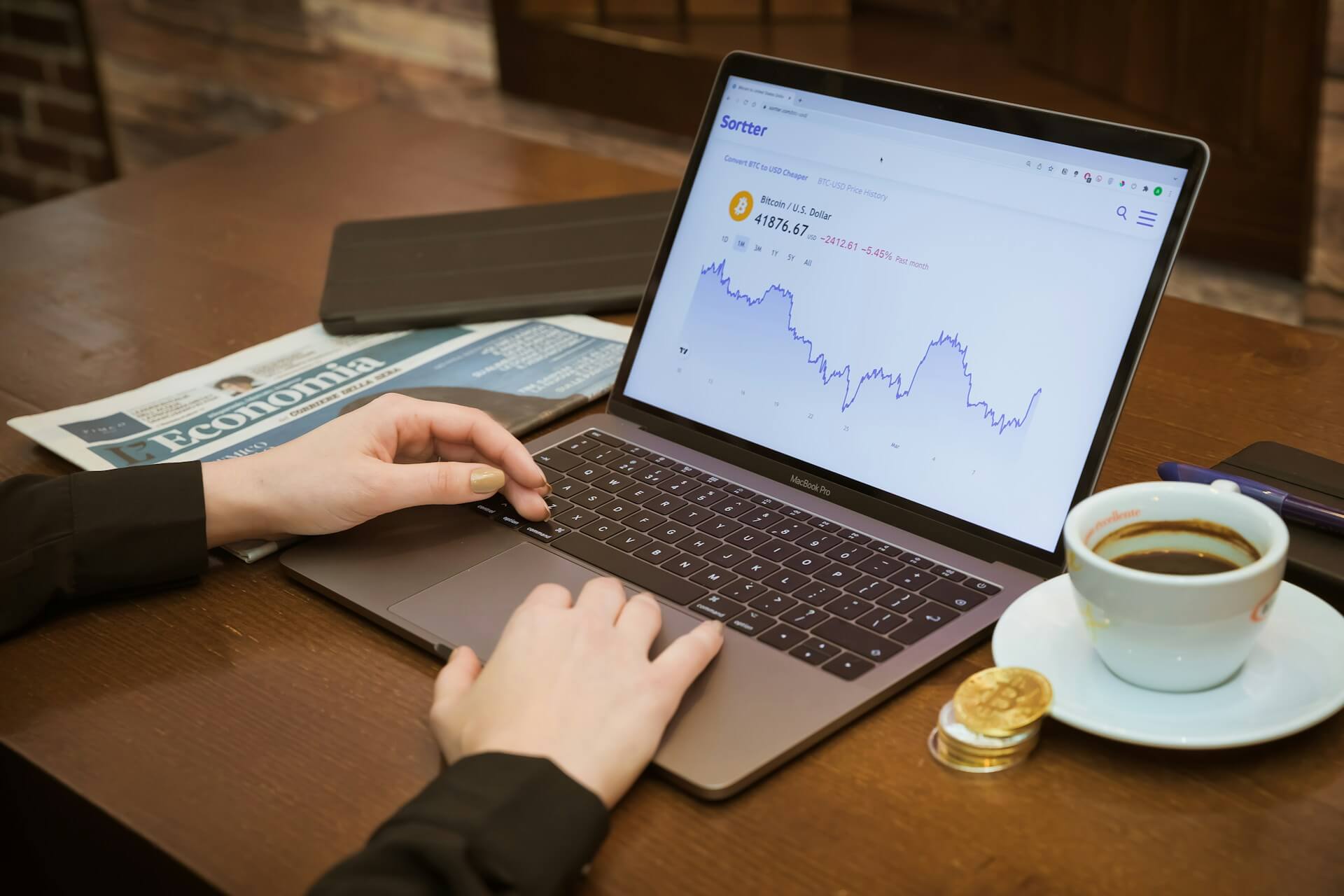Annuities 101
5
min read
8 best investment products for 2025

Amanda Gile
August 1, 2025

As markets evolve and economic conditions shift, staying informed is essential to making smart investment decisions. That means keeping an eye on trends, interest rates, and sector-specific growth, all while aligning your strategy with your personal financial goals.
Whether you’re an experienced investor or just getting started, this guide can help you identify some of the best investment products for 2025. We’ll explore what we think some of the best investment products are right now and outline what to consider as you build your portfolio. Note this is not a recommendation or investment advice – just information on what we think are some of the top investment products. Please thoroughly review your financial situation before making any financial decisions and for advice concerning your own situation, please contact the appropriate professional. Remember, investing involves risk, including loss of principal and past performance does not guarantee future results.
{{key-takeaways}}
Where you could invest your money 2025
Finding the best investment products for 2025 means balancing risk and reward in line with your financial objectives. For investors seeking moderate-to-high-yield options, a strong portfolio involves diversifying across a range of investment opportunities, from growth-oriented, high-yield investments to low-risk, fixed-income investment options. Here are eight options worth considering.
- Annuities
Annuities, particularly fixed index annuities, are popular among conservative investors seeking guaranteed income with limited market exposure. These insurance-backed contracts can offer a blend of principal protection and potential for growth, aiming to deliver steady payouts over a set period or a lifetime. The guarantees provided and limited market exposure can make them a low-risk option, potentially ideal for retirees or those seeking long-term financial security.
- Medium-term corporate bonds
Medium-term corporate bonds, with maturities of three to eight years, typically offer higher yields than government bonds — currently returning around 4–6%, depending on credit quality and market conditions. They can provide a relatively stable income stream. While typically less volatile than equities, they carry some credit risk, so diversification across issuers may be important for managing potential downgrades or defaults.
- High-yield savings accounts
When safety and liquidity are top priorities, high-yield savings accounts remain one of the best short-term investment options available. Online banks typically offer competitive yields of 3–5%, which can be significantly higher than traditional savings rates. These accounts are FDIC-insured up to $250,000, making them virtually risk-free. While they don’t always support long-term growth, they may be ideal for emergency funds or upcoming expenses that require fast, penalty-free access.
- Short-duration bond funds
Short-duration bond funds invest in bonds with maturities of one to three years, offering a potentially stable, income-generating option that can be less sensitive to interest rate swings. With typical historical returns from 3–5%, they may be ideal for more risk-averse investors. While not FDIC-insured, they can provide a lower-volatility option within a diversified portfolio.
- Dividend-paying stock funds
Dividend-paying stock funds can provide the dual benefit of potential capital appreciation and regular income. These funds focus on mature, financially strong companies with a history of consistent dividend payouts, offering historical annual yields of 2–5%. They may be well-suited to investors seeking high-yield opportunities with moderate risk and long-term growth potential.
- S&P 500 index funds
Investing in an S&P 500 index fund can offer broad exposure to the 500 largest publicly traded U.S. companies. These funds historically deliver average annual returns of 7–10%, making them a somewhat reliable option for long-term investors with a higher risk tolerance and longer time horizon. They can be a cornerstone of many portfolios due to their low cost and relatively consistent performance over longer time periods. It could be important to look at the weight of the holdings in these funds as the exposure may not be as broad as expected. Often these funds are heavily weighted on certain companies which can impact overall performance.
- Nasdaq-100 ETFs
For higher growth potential with potentially more risk, Nasdaq-100 exchange-traded funds (ETFs) provide exposure to top non-financial companies focused on technology and innovation. These ETFs have historically delivered average annual returns exceeding 10%, though they can come with increased volatility and increased downside risk. They may be suited for investors with a higher risk appetite and a long-term investment horizon. Similarly to S&P 500 index funds, it could be important to look at the weight of the holdings in these funds as the exposure may not be as widespread as expected. Often these funds are heavily weighted on certain companies which can impact overall performance.
- Real estate investment trusts (REITs)
Real estate investment trusts (REITs) can provide access to property investments without the burden of direct ownership. These trusts aim to invest in income-generating assets, such as apartment complexes, industrial centers, and healthcare facilities, and typically return most of their profits as dividends. These historically often yield 6–10%. While REITs could offer consistent income and growth potential, they can be sensitive to interest rate changes and broader market conditions, so due diligence is key.
{{inline-cta}}
Investment opportunities to look out for in 2025
For investors seeking growth beyond traditional asset classes, several emerging sectors are poised to gain momentum. Driven by innovation, policy changes, and global demand, these industries present compelling opportunities.
Green energy and sustainability
The global shift toward sustainability continues to fuel investment in green energy, making it a potentially optimistic sector for long-term growth. Opportunities span solar and wind energy, hydrogen fuel, and advanced battery storage. Green bonds, which fund environmentally focused projects, are also gaining popularity as fixed-income investments.
Artificial intelligence and automation
No longer just buzzwords, artificial intelligence (AI) and automation technologies are revolutionizing industries from manufacturing to healthcare. Key investment areas include AI-driven software, robotics, and cybersecurity solutions. Companies leading in these technologies have the potential for high returns, but the sector’s fast pace and volatility mean it’s best suited to those comfortable with higher risk.
Infrastructure and manufacturing
U.S. government investment in domestic industry — supported by reshoring incentives and tariffs — is helping revitalizing its infrastructure and manufacturing sectors. This includes traditional public works like roads, bridges, and public transit, as well as advanced manufacturing powered by robotics and automation. Construction companies, and those that deal in materials and equipment, may be well-positioned to benefit from increased federal and state-level spending.
Healthcare and biotech
An aging population, technological advancements, and rising demand for personalized care are driving growth in healthcare and biotechnology. Key opportunities lie in areas such as telehealth and precision medicine. While the sector can offer strong long-term potential, it also comes with increased risk due to lengthy development cycles and regulatory hurdles.
Key considerations for choosing your 2025 investments
Before committing to any investment, it’s essential to evaluate a few foundational factors. Here are three important considerations to guide your decisions.
Risk tolerance
Understanding your risk tolerance is crucial in determining which investments are right for you. Think about how comfortable you feel with market volatility, potential loss of principal or whether you prefer more predictable growth.
Conservative investors may lean toward fixed annuities, high-yield savings accounts, or short-duration bond funds that look to prioritize reliable returns and capital preservation. Those with a higher risk appetite might explore Nasdaq-100 ETFs or emerging tech stocks, which offer greater return potential. Being honest with yourself, both emotionally and financially, about how much risk you can handle will help you build a portfolio you can stick with over time.
Market conditions
Keeping up to date with market trends and economic conditions is crucial for maintaining a resilient investment strategy. Interest rate changes, inflation, and geopolitical developments can all have an impact on performance. Being aware of these shifts can allow you to make timely adjustments, rebalancing your portfolio as needed to reflect current realities. It is worth noting that reacting emotionally to market conditions can often have a negative overall impact on your strategy. Look to make a plan that works for you and try to adhere to it.
Financial goals
Your investments should be driven by your unique financial goals. Perhaps you’re saving for retirement or a big purchase. Short-term goals, within three years, typically call for liquid, low-risk investments. Longer-term goals may mean you can weather market downturns and can accommodate more growth-oriented options, such as S&P 500 index funds. Defining your goals and understanding your time horizon can help ensure your strategy supports your future plans without exposing you to unnecessary risk.
Explore annuity options with Gainbridge
Preparing for the years ahead can start with choosing investments that support long-term stability and growth. Fixed annuities, designed to offer secure, predictable returns, are a low-risk option. With Gainbridge’s innovative platform and no hidden fees, you can plan with confidence.
Explore your annuity options with Gainbridge today.
This article is intended for informational purposes only. It is not intended to provide, and should not be interpreted as, individualized investment, legal, or tax advice. The GainbridgeⓇ digital platform provides informational and educational resources intended only for self-directed purposes. For advice concerning your own situation please contact the appropriate professional. Investing involves risk, including loss of principal and past performance does not guarantee future results.
Maximize your financial potential
with Gainbridge
Start saving with Gainbridge’s innovative, fee-free platform. Skip the middleman and access annuities directly from the insurance carrier. With our competitive APY rates and tax-deferred accounts, you’ll grow your money faster than ever.
Learn how annuities can contribute to your savings.

Individual licensed agents associated with Gainbridge® are available to provide customer assistance related to the application process and provide factual information on the annuity contracts, but in keeping with the self-directed nature of the Gainbridge® Digital Platform, the Gainbridge® agents will not provide insurance or investment advice

Explore different terms and rates
See how your money can grow with Gainbridge
Try our growth calculator to see your fixed return before you invest.



.jpg)




















